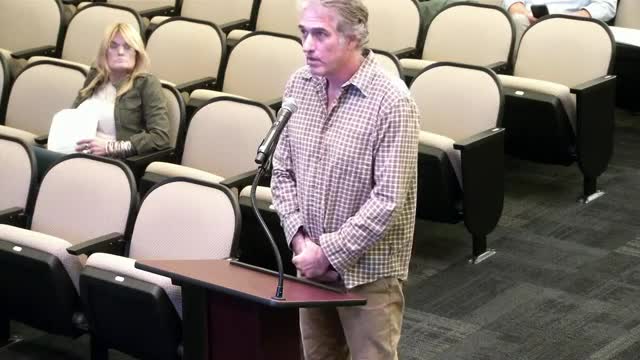Residents protest rapid housing development straining outdated sewer systems in historic neighborhoods
December 21, 2024 | Panama City, Bay County, Florida
This article was created by AI summarizing key points discussed. AI makes mistakes, so for full details and context, please refer to the video of the full meeting. Please report any errors so we can fix them. Report an error »

In a recent City Commission meeting in Panama City, residents voiced their concerns over rapid development and its impact on existing neighborhoods. One resident, Derek, passionately described the changes happening in his community, highlighting the challenges posed by increased housing density and outdated infrastructure.
Derek pointed out that new homes are being built on previously single lots, with properties now less than 20 feet apart. This shift has raised alarms about adherence to zoning regulations, particularly the 10-foot setback rule, which is being overlooked due to the division of lots. He emphasized that the neighborhood, once known for its spacious gardens, is now being transformed into a densely packed area, straining the local sewer system.
The resident detailed how the sewer infrastructure, installed in 1951, has not been upgraded to accommodate the influx of new residents. He noted that a recent development of 350 apartments has exacerbated the situation, leading to daily sewage removal by pump trucks that struggle to keep up with demand. Derek expressed frustration over the lack of information from the city regarding the frequency of these services, indicating a system already at its breaking point.
He also raised concerns about the environmental impact of these developments, mentioning issues like inadequate drainage and the potential for sinkholes. Derek argued that while new developments in unbuilt areas may be acceptable, altering established neighborhoods without proper planning and infrastructure upgrades is detrimental.
As the meeting concluded, Derek's remarks resonated with many in attendance, highlighting a growing tension between development and community preservation in Panama City. The discussions reflect a broader concern about how cities manage growth while maintaining the quality of life for existing residents.
Derek pointed out that new homes are being built on previously single lots, with properties now less than 20 feet apart. This shift has raised alarms about adherence to zoning regulations, particularly the 10-foot setback rule, which is being overlooked due to the division of lots. He emphasized that the neighborhood, once known for its spacious gardens, is now being transformed into a densely packed area, straining the local sewer system.
The resident detailed how the sewer infrastructure, installed in 1951, has not been upgraded to accommodate the influx of new residents. He noted that a recent development of 350 apartments has exacerbated the situation, leading to daily sewage removal by pump trucks that struggle to keep up with demand. Derek expressed frustration over the lack of information from the city regarding the frequency of these services, indicating a system already at its breaking point.
He also raised concerns about the environmental impact of these developments, mentioning issues like inadequate drainage and the potential for sinkholes. Derek argued that while new developments in unbuilt areas may be acceptable, altering established neighborhoods without proper planning and infrastructure upgrades is detrimental.
As the meeting concluded, Derek's remarks resonated with many in attendance, highlighting a growing tension between development and community preservation in Panama City. The discussions reflect a broader concern about how cities manage growth while maintaining the quality of life for existing residents.
View full meeting
This article is based on a recent meeting—watch the full video and explore the complete transcript for deeper insights into the discussion.
View full meeting